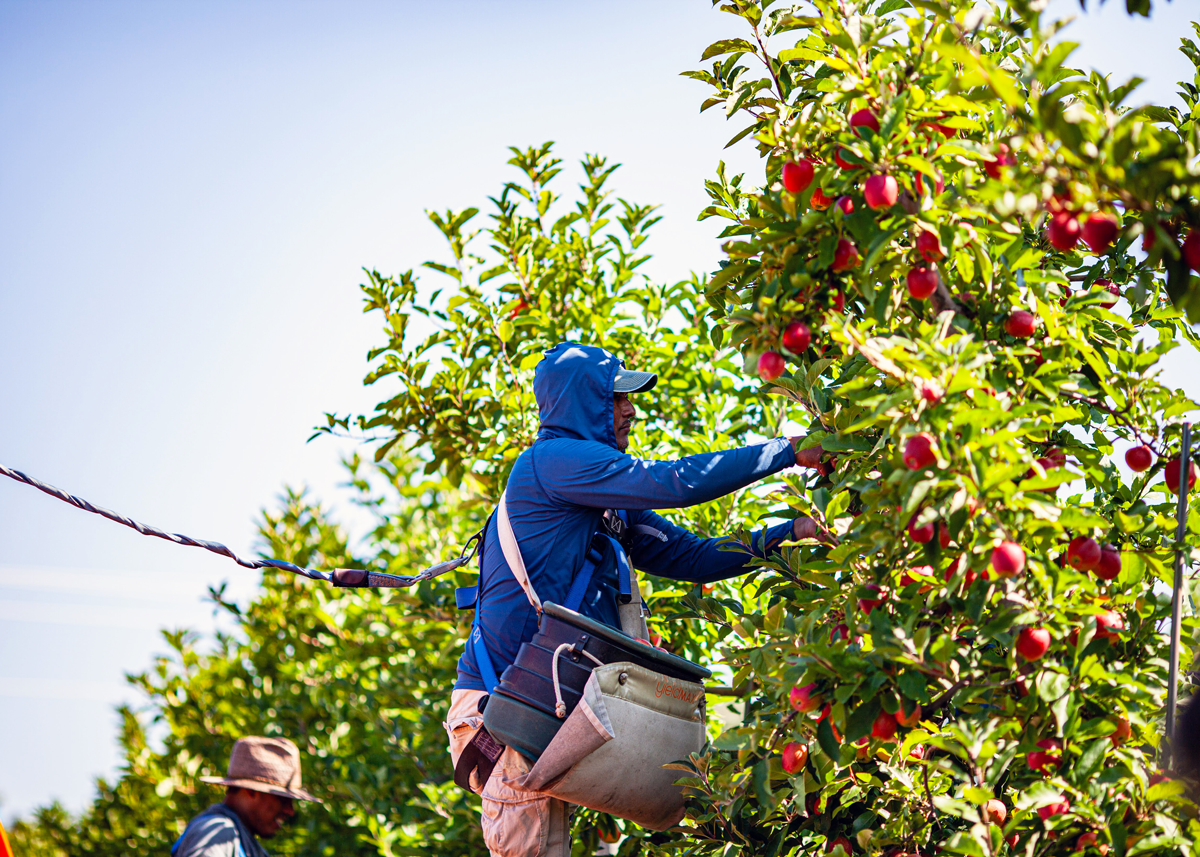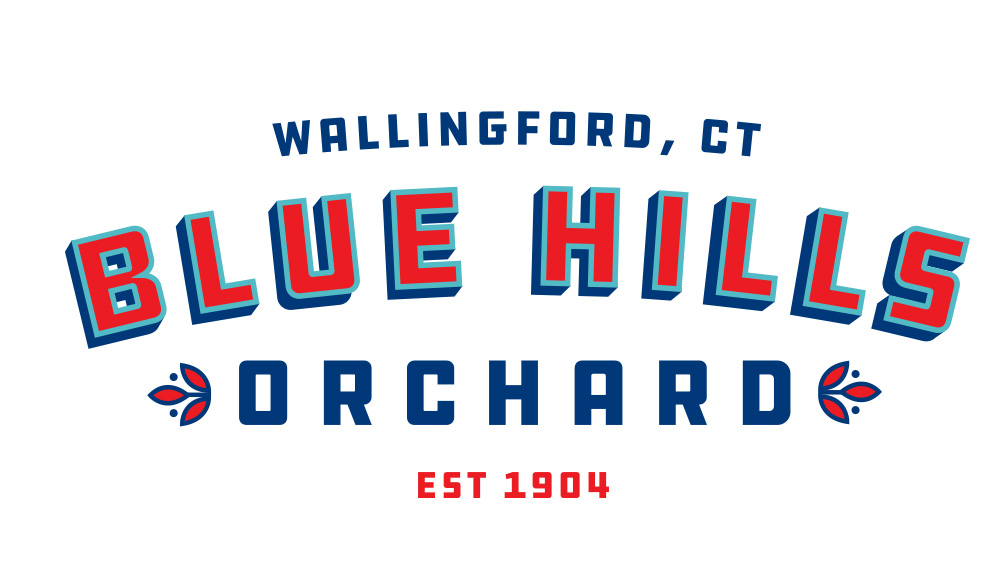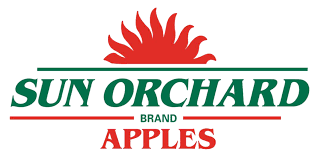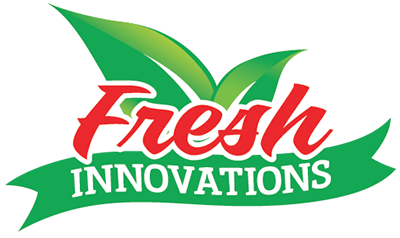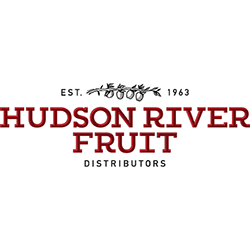Apple season will soon be underway in the East Coast, with varieties like ginger gold and paula reds beginning mid-August in the Hudson Valley of New York, followed soon after by orchards in central and western upstate New York and then the northeast.
Marketers say this looks to be a strong season for Eastern apples by all accounts. While rain and cooler temperatures hit the eastern part of the country this spring, it had an added benefit of a longer window for pollination and fruit set.
“This season started off with a cool and wet spring, which is great news for apple trees — they had a long time to set fruit, and there weren't any major temperature swings that pushed blossoms ahead of schedule (or set them back, for that matter),” says Jessica Wells, executive director of the Lockport, N.Y.-based Crunch Time Apple Growers. “Like most of the East Coast, we've had quite a few hot days this summer, but we don't expect that to impact the harvest.”
Brenda Briggs, vice president for sales and marketing at Rice Fruit Co. in Gardners, Pa., says the harvest of early gala and Honeycrisp began in early August and the crop looks good.
“Gala and Honeycrisp are coming off the trees with great size, strong internal pressures, and beautiful color,” Briggs says. “We've had warm temperatures and ample rainfall this summer — exactly what we hope for in terms of sugar development and sizing. It's shaping up to be an excellent start.”
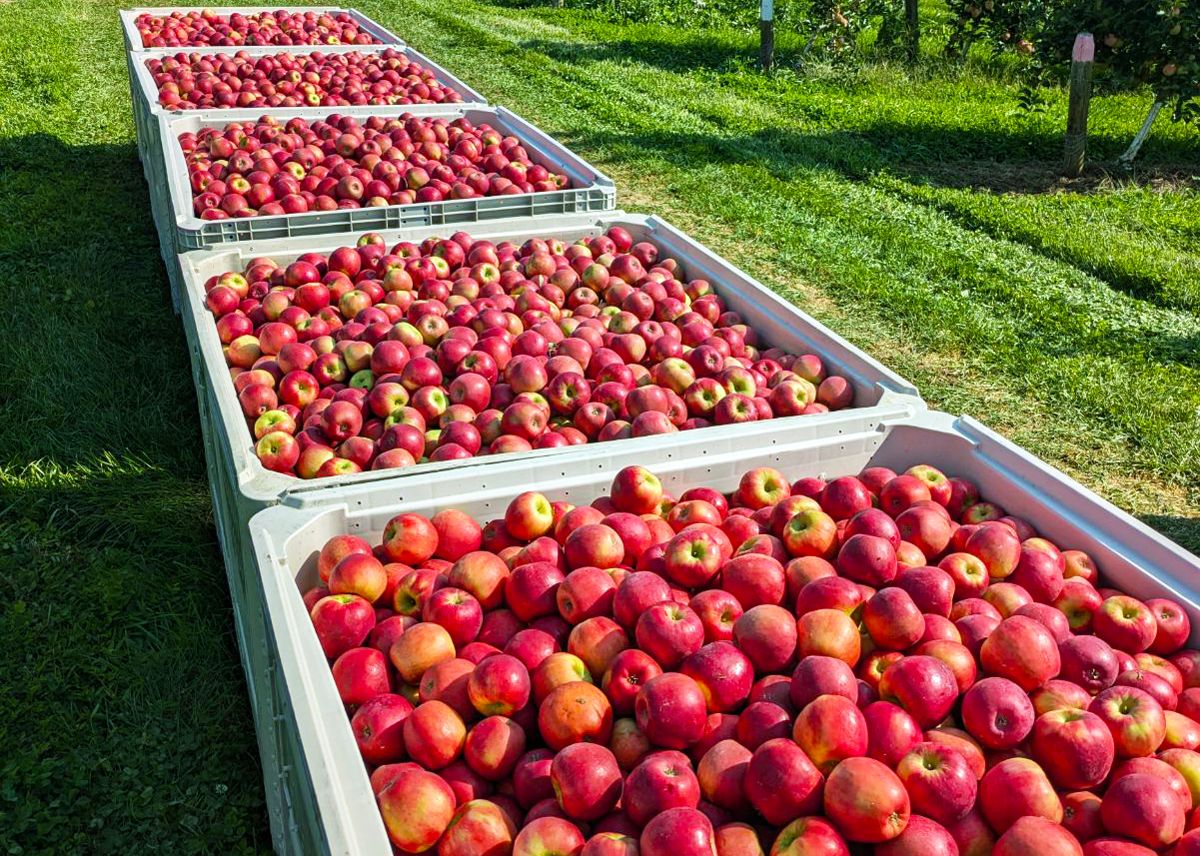
Notable Varieties
Cornell University-developed SnapDragon and RubyFrost apples continue to gain traction, Wells says.
“SnapDragon is an emerging variety, nearing 10 years of production, it is becoming one of the favorites among consumers,” she says. “Even with distribution primarily in the East, it is among the top five premium varieties on the market. We hope to make it even more available to consumers this year.”
Cynthia Haskins, president and CEO of the New York Apple Association, says that the state's growers produce about 250 different apple varieties, about 30 of which are available through wholesale and retail. She also says the association has seen growing interest in some of these newer varieties.
“The managed varieties like SnapDragon, RubyFrost and New York-grown SweeTango, and EverCrisp are gaining traction and a fan base,” she says.
Crop Size
Haskins says she expects New York growers will see a good range of sizes this season, noting the crop is also shaping up to have ample volume to promote.
“New York is expecting over 32 million bushels of apples this year and that is a million over last year,” she says.
Adding to that large crop size this year is what Wells says could be the largest crop of SnapDragon to date.
“Our main goal is to ensure that every single one makes it off to stores and into the homes of shoppers,” she says. “That means finding some new retail partners but also making sure we do everything possible to ensure the apples coming out of storage in April or May are as good as those that are packed in October. We're always working with Cornell to address concerns of storage operators, packers and shippers related to issues that may reduce fruit quality and in turn, returns to growers.”
Industry Challenges
Briggs says growers are concerned about labor, especially as harvest has begun.
“We depend on skilled, reliable labor to harvest at the right time and deliver the quality our customers expect,” Briggs says. “We work closely with industry partners like the U.S. Apple Association to communicate with policymakers about how critical farm labor is to the produce industry.”
Wells says growers also face the challenge of rising production costs and relatively flat wholesale prices. She says the industry must work toward increasing apple consumption.
“Consumers are excited about our apples, SnapDragon in particular, which is what is needed to stimulate the industry as a whole,” she says. “We need people to eat more apples, and to do that we need to put great-tasting fruit in stores. There are varieties that fall short on taste that are taking up significant shelf space. If we want consumers to purchase apples on every trip, we have to give them something they want to come back for every time they shop.”
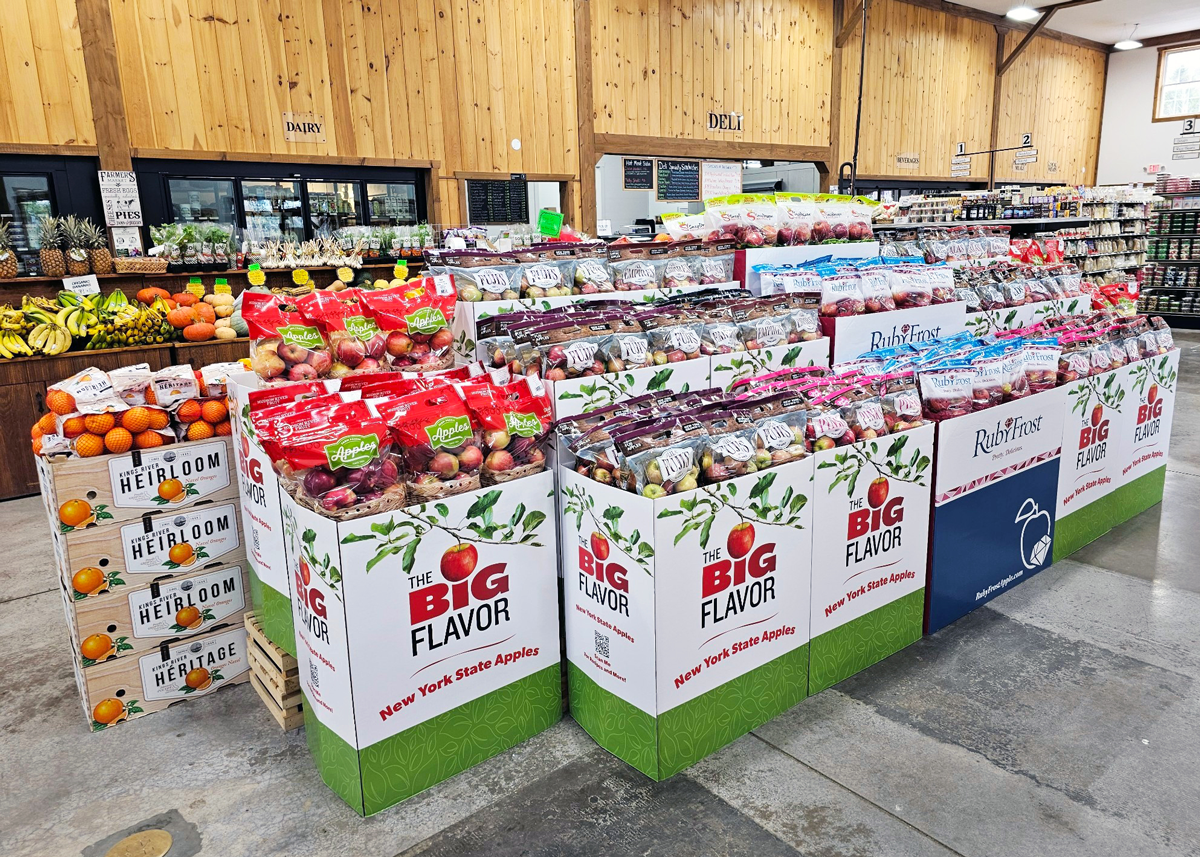
Promotion Spotlight
The New York Apple Association will once again highlight its “The Big Flavor” campaign with custom single-unit display shippers and signage for stores.
“We have seen an increased interest in poly, paper and tote packaging, and the grab-and-go offerings are good way to attract a solid price point in just one ring up,” Haskins says.
The association also plans digital billboards in the heart of New York City's financial district and digital panel billboards located throughout the city's five boroughs to promote “The Big Flavor.”
Haskins says the association will also offer some digital coupons, which she says have been delivering results. Geotargeting digital advertising as well as targeted markets for social media have also seen success, she says.
Briggs encourages retailers to lean into the excitement of the start of apple season, adding that prominent displays, variety education and sampling opportunities of classic and emerging varieties help boost sales. She also says flexible pack styles from bulk, pouches to bags help tailor displays to shopper preferences and store layouts.
“When that first bite is exceptional, it sets the stage for the next purchase,” Briggs says. “Our goal is to ensure a consistently great eating experience — from the first gala in August to the last EverCrisp in summer.”
Wells, too, encourages retailers to think beyond traditional “apple season” months.
“September and October might be the prime time for buying apples, but they're hardly the only window when apples are available,” she says. “In fact, we reliably have volumes of SnapDragon apples available from mid-September to mid-March and RubyFrost apples from mid-October through May. Retailers should promote apples as seasonal and available well into the winter months, too.”
Wells says that while the average shopper can only distinguish a small handful of apple varieties, that's where retailers can step in and assist with signage on the apple display to help consumers understand the unique eating experiences of each variety.
“Calling out SnapDragon and RubyFrost apples by name and unique attributes, for example, helps to educate shoppers and encourage them to purchase products they may not be as familiar with,” she says.
And she encourages retailers to get creative with displays and signs to catch the shopper's eye.
“We have hanging signs that some retailers use, and it's a fun way to use the entire vertical display space without sacrificing square footage in the store,” she says. “It meets customers at their eye level, too.”
Haskins says retailers should always consider cross-promotion.
“NYAA recommends that retailers build large displays and include apple cider with the displays, as consumers want to enter the store and easily be able to find the flavor of the fall harvest,” she says. “Other ways to cross-merchandise are to set up displays for charcuterie boards, or the makings for apple pie or apple crisp. Be sure and give consumers recipes for new pie ideas.”
Wells, too, suggests retailers lean into consumers' continued interest in locally grown produce.
“When possible, retailers should also promote produce that's grown in the region — even if our apples are in stores in Omaha or Houston — they have traveled less miles to market than those grown on the West Coast,” she says.

